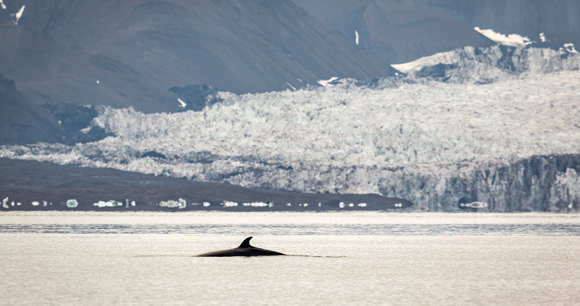AWI has been collaborating with Norway’s largest animal welfare group, NOAH, and Whale and Dolphin Conservation (WDC) to oppose a dangerous experiment on wild minke whales that was to begin in late spring, last several weeks, and continue next year. The plan calls for researchers from the United States and Norway to capture up to 12 whales off Vestvågøy in the Lofoten area of northern Norway in order to study how their brains respond to ocean noise.

AWI requested information from the Norwegian government and learned that the researchers planned to set nets extending almost a mile across a passageway between islands to herd migrating juvenile minke whales into an enclosure, trapping them inside. The researchers would then attempt to move these whales into a modified aquaculture cage, which would be secured between two rafts. Once a whale is in the cage, the researchers would engage in “auditory evoked potential” testing, whereby electrodes are attached to the neck of the whale. Sounds would be introduced to test if the electrodes pick up the signals, which the researchers claim will indicate if the whale’s ear has detected the sound. The whales’ brain waves would be measured in order to determine how they might react to naval sonar and noise from oil and gas exploration. Whales could be held captive for as long as four days before being released.
This experiment is disturbing because of the stress likely to be inflicted on the whales. If a minke whale, even a juvenile, were to respond with great force in a panicked attempt to flee, it could injure not only the whale but also the human researchers, particularly those in the water.
The researchers have proposed using sedatives to calm whales who display signs of stress and even stunning them in an emergency. Little is known about sedating or stunning wild cetaceans, but available data show that sedation of baleen whales could put their lives at risk. (Presumably, sedation would also add an unwanted variable to the study.) There have been incidents in which minke whales became trapped in aquaculture pens and had to be euthanized. In 2009, for example, a small minke whale broke through a cod pen in Karivika, Norway. The trapped animal was characterized by witnesses as “raging wild” and was eventually shot before being removed from the pen by crane. The methodology of the Lofoten experiments will involve tagging the whales in an effort to assess, at least temporarily, the study’s effect on the whales’ health.
AWI, NOAH, and WDC have written to Mattilsynet, the Norwegian Food Safety Authority, urging the agency to revoke its approval of this unwarranted experiment. The three groups have rallied supporters in opposition to the project, which has received attention in Norwegian and international media. AWI has also written to the US government, admonishing the US Navy and National Marine Fisheries Service for providing funding for this research. Other branches of the US government, as well as the oil and gas industry, are also funding the project. AWI and the other humane groups contend that existing research already tells us how baleen whales are affected by ocean noise, and this body of science should be enough for humans to understand that we must curtail the levels of sound we introduce into the sea.